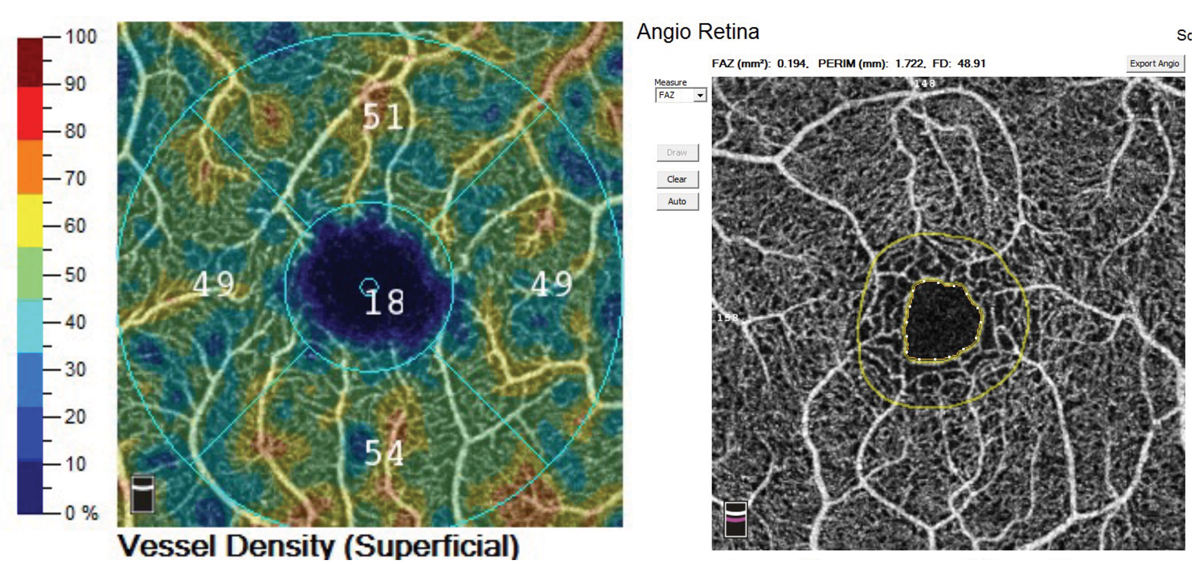 |
|
Demographic factors such as aging, male sex and high BMI and OCT-A biomarkers such as high FAZ area and low FAZ circularity were significantly associated with risk for reduced visual acuity in older adults. Photo: Jessica Haynes, OD. Click image to enlarge. |
An eye screening program in Hong Kong for people aged 50 and older yielded several potential OCT angiography (OCT-A) biomarkers for predicting low visual acuity after researchers analyzed the findings. OCT-A is a noninvasive alternative to fluorescein angiography (FA) that doesn’t entail the usual FA side effects such as nausea and skin irritation. As such, it’s well-suited to community screening.
The prospective, cross-sectional study included OCT-A images of 4,188 eyes. The researchers reported a mean superficial vessel density (MSVD) of 14.48 mm-1 and a mean capillary perfusion density (MCPD) of 0.41.
According to multivariate analysis, the following factors were independently and significantly associated with reductions in visual acuity: age, male sex, high BMI, high foveal avascular zone (FAZ) area, low FAZ circularity, low MSVD in the outer ring (especially in the nasal and temporal outer quadrants) and low MCPD in the outer superior quadrant.
The researchers concluded in their paper that these risk factors “should be considered in clinical practice and in citizens of this population, while these OCT-A parameters can be used as biomarkers to predict deteriorations in visual acuity.”
Li Y, Fung NS, Chan JCH, et al. OCTA biomarkers in adults aged 50 and above: a prospective and cross-sectional community-based study. BMC Ophthalmol. 2023;23:71. |


